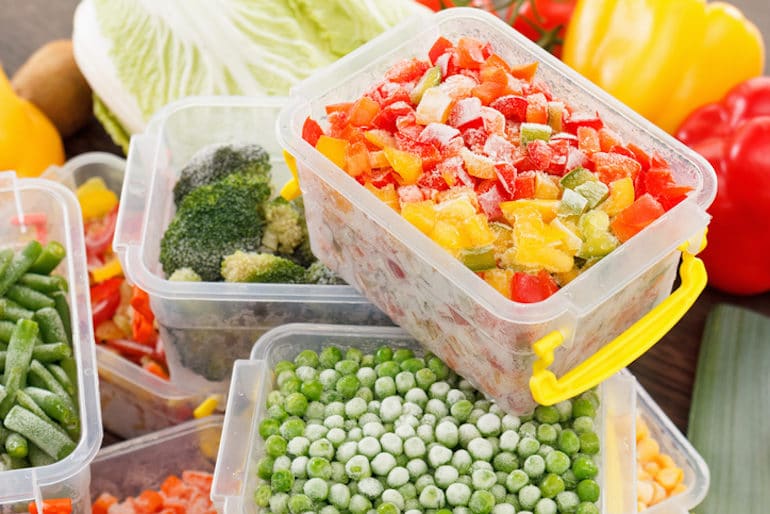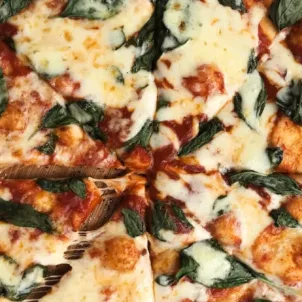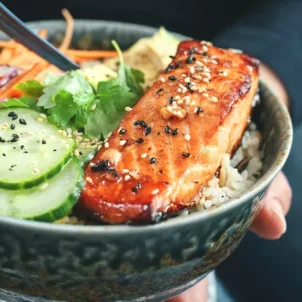THE WELLNEST • Food • Healthy Eating
Is Microwaving Food Bad for You?
By Gaby Vaca-Flores, RDN, CLE •
September 5, 2019
Many people turn to microwave ovens for the convenience of heating up meals in minutes. Microwaves are a meal prepper’s best friend and a frozen-meal lover’s must-have. In fact, according to a 2015 report, microwaving ranks as the third-most popular heating method in American homes. However, for as long as microwaves have existed, the general public has been reluctant to fully trust the oven’s safety.
Here’s a closer look at the science behind microwaves, myths, and a definitive answer to the pressing question: Are microwaves bad for you?

How microwaves work
Microwaves use non-ionizing radiation to heat food by distributing low-energy electromagnetic waves, aka radiofrequency radiation. These frequencies penetrate the water molecules inside our food. All of this happens within the magnetron, a device that permits consistent electrical energy flow into the cooking chamber. In there, the waves then provide thermal energy to heat food. This radiation process often leads to misunderstandings about the safety of microwaving food. Negative connotations associated with the term radiation sometimes lead people to think that using a microwave is bad for both their food and health.So, is microwaving food bad for you or not?
Microwave myth #1: Radioactivity
One of the most common misconceptions is that food can become radioactive after cooking it in a microwave. Unlike x-ray machines that use high-energy waves, microwaves use low-energy radio waves similar to waves found in TVs. These shorter and less powerful radio waves aren’t strong enough to cause harmful radioactive levels.Microwave Myth #2: Micronutrients
It’s also rumored that microwave heat can disintegrate micronutrients. Before we use microwave ovens as an excuse to not incorporate more greens into our meals, what does the science say on the matter? A study by the Journal of Food Science suggests that heating meals in a microwave can be one of the best ways to get the most nutrients out of your food. Another French study also found that compared to traditional cooking methods like boiling, microwave heating is significantly better at preserving the nutrient profile of certain vegetables. Lastly, a review from the American Dietetic Association highlights the high antioxidant retention from microwave cooking versus pressure cooking and boiling.Microwave Myth #3: Radiation
Some people are also concerned about health and injury risks associated with exposure to microwave radiation. As a result, they may keep a safe distance while the microwave runs. It may be reassuring to know that most microwave injuries are burns, resulting from poor handling of hot plates, containers, or liquids—not radiation. All things considered, you’re A-okay to continue (or start) microwaving food.
Safety Tips for microwaving food
The Food and Drug Administration (FDA) assures consumers that as long as a microwave is in good condition, it won’t leak energy. As a matter of fact, they require that microwave manufacturers certify that their ovens meet the FDA’s strict safety standards. That’s why it’s very important to ensure that your microwave is in good working condition. Here are some top tips advised by the FDA’s Center for Devices and Radiological Health to help maximize microwave-related safety:- Always inspect your microwave for any damages such as faulty doors, latches, or seals.
- Exercise extra caution with liquids. Liquids can exceed their boiling temperature during microwave cooking. If that happens, the liquid can suddenly explode, thus risking burns. To avoid injury, always follow the manufacturer’s heating instructions.
- Microwave-safe containers are non-negotiable! Identifying whether or not your container can be used in the microwave is simple: Just look for a “microwave safe” label. These containers are typically made out of heat-proof glass. Always avoid metal or cold-storage containers. Ensuring your containers are appropriate for microwave use will help your food cook more evenly and help prevent damage to the appliance.
More like this









